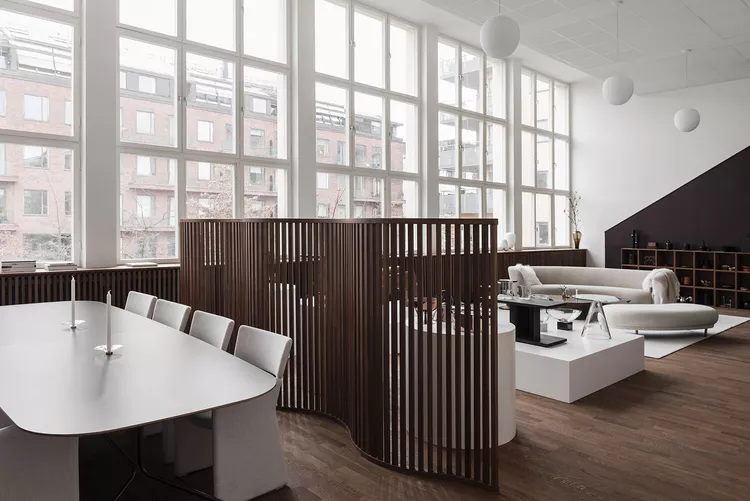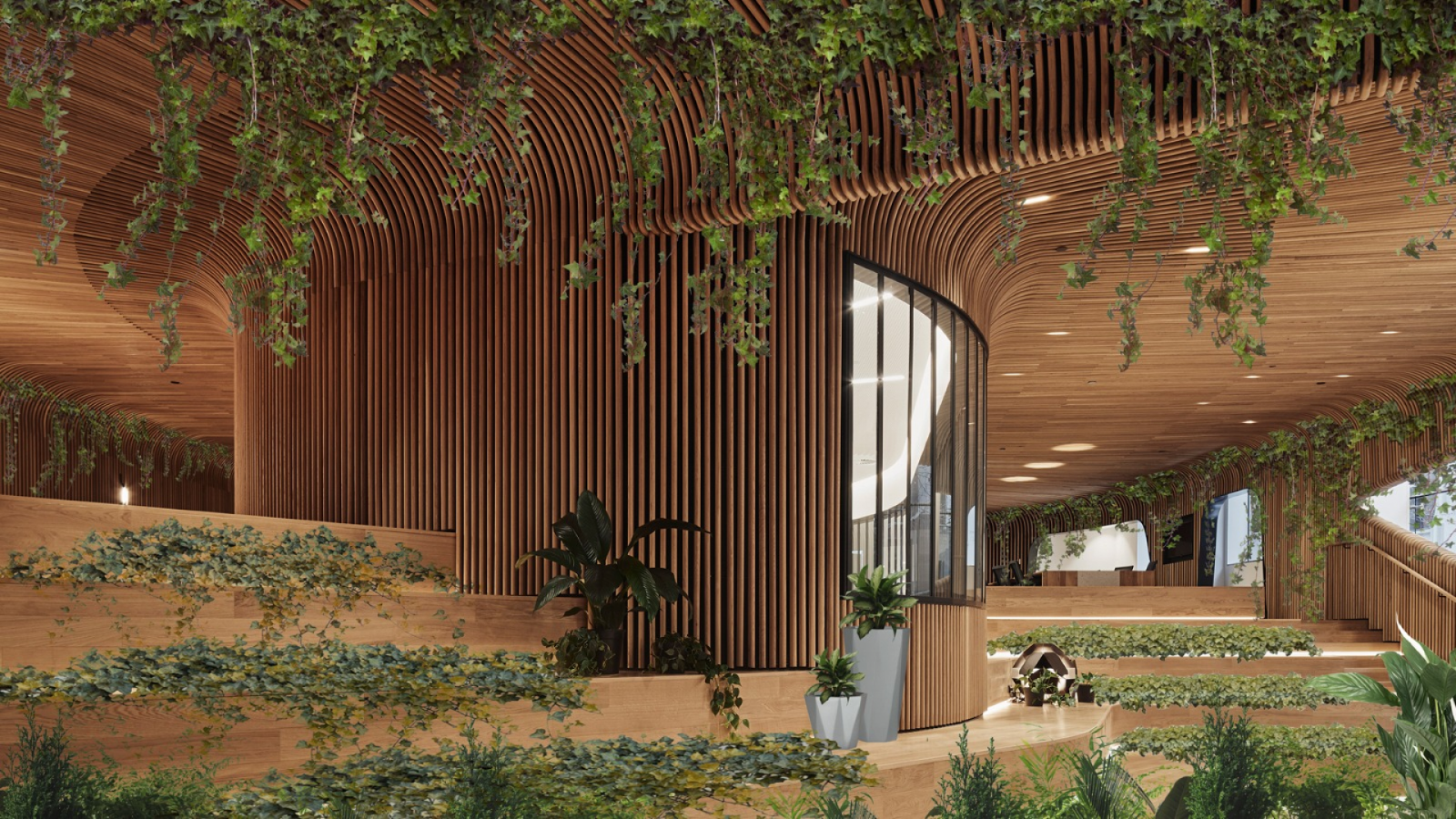If you're in the market for a new home, you'll discover a wide variety of architectural styles to choose from when you start your house hunt. While the abundance of options can be overwhelming to some potential home buyers, having so much to choose from can be a plus.
One popular architectural style you'll come across is the contemporary home. Contemporary homes incorporate design elements that keep up with current trends while also giving you – the homeowner – the opportunity to have your creativity shine through.
In this article, we'll look into the origins of contemporary architecture, explore the key interior and exterior features of these homes, and weigh the pros and cons of owning one.
What is a contemporary home?
A contemporary home embodies the architectural trends of the present day. While it shares some similarities with modern homes, contemporary houses exhibit distinctive characteristics such as sleek lines, abundant natural light, and a minimalist ambience.
Contemporary architecture has its roots in the late 20th century but remains in a state of continual evolution in response to current design trends.
Given the ever-changing nature of design preferences, a contemporary home readily adapts to reflect the prevailing design sensibilities of its era. Furthermore, these homes place a strong emphasis on the choice of building materials, often favouring natural and sustainable options.
History of contemporary interior design
According to Erin Sander, an interior designer based in Dallas, Texas, and founder of Erin Sander Design, “Contemporary design emerged following the mid-century modern movement.” In its early stages during the 1970s, it was initially perceived as a fusion of various popular aesthetics from that era, such as modernism, postmodernism, and Art Deco. Over time, the term "contemporary" gradually developed a distinct identity and meaning of its own.
Blending aesthetics with functionality
When it comes to contemporary home design, the blend between aesthetics and functionality is a defining characteristic. These homes are not only a feast for the eyes but also a harmonious space that caters to the needs of modern living.
Let's discover how contemporary homes master the art of balancing style and purpose:
-
Open floor plans

Source: LILJENCRANTZ DESIGN
Contemporary homes often feature open floor plans that create a seamless flow from one living area to another. The absence of unnecessary walls enhances the sense of spaciousness and encourages interaction among family members and guests. Aesthetic appeal meets practicality in the way open spaces accommodate various functions without feeling cluttered.
-
Abundant natural light
Large windows, glass walls, and skylights are common elements in contemporary architecture. These design choices flood the interior with natural light, reducing the need for artificial lighting during the day. This not only contributes to the aesthetic appeal of the home but also promotes energy efficiency.
-
Minimalist design
Contemporary homes embrace a minimalist design philosophy. The "less is more" approach means that the interiors are clutter-free, and every element serves a purpose. This aesthetic simplicity is not just visually pleasing; it also makes cleaning and maintenance more straightforward.
-
Integration of technology
Functionality in contemporary homes extends to technology integration. Smart home systems are often incorporated, allowing homeowners to control lighting, temperature, security, and entertainment with ease. The discreet placement of tech elements keeps the focus on the overall design.
-
Sustainable materials
Sustainable architecture is another key aspect of contemporary design. Many of these homes feature the use of eco-friendly and sustainable building materials. This not only aligns with the eco-conscious lifestyle but also contributes to the long-term functionality and durability of the house.
-
Indoor-outdoor connection
Contemporary homes often prioritise the connection between indoor and outdoor spaces. Sliding glass doors, outdoor living areas, and landscaping that flow seamlessly from the interior enhance the functionality and aesthetics of the home.
In contemporary home design, combining aesthetics and functionality creates spaces that are not only visually appealing but also highly liveable. This blend of form and purpose defines the essence of modern living, offering a comfortable and beautiful environment for homeowners to enjoy.
Pros and cons of contemporary houses
Contemporary homes offer a distinct blend of versatility and individuality in design, which can be highly appealing to homeowners. However, like any architectural style, there are both pros and cons to consider before determining if this is the right design choice for your home.
Pros:
-
Uniqueness and customisation: One of the primary advantages of contemporary homes is their capacity for personalisation. Homeowners can infuse their unique style and preferences into the design, creating a one-of-a-kind space that resonates with their personality.
-
Low maintenance: The clean lines and minimalist layout commonly found in contemporary designs translate to easy maintenance. This streamlined approach to design makes it simpler to keep your home looking neat and organised.
-
Eco-friendly focus: Many contemporary homes, particularly those constructed in recent years, prioritise sustainability. They often incorporate eco-friendly building materials and energy-efficient systems, contributing to a reduced environmental footprint.
Cons:
-
Higher cost: The sustainability and quality of materials used in contemporary homes can lead to higher initial costs. While these materials are often considered an investment due to their durability and eco-friendliness, the upfront expenses may be a drawback for some.
-
Limited design versatility: Contemporary designs have a specific look based on the materials and elements used. This can make it challenging to blend various design styles within the same space. If you enjoy frequently changing the look of your home, a contemporary design may pose limitations in this regard.
Modern home trends to watch
In architecture and interior design, contemporary homes have become synonymous with innovation, individuality, and eco-conscious living. While contemporary design principles remain a popular choice, staying in the know about modern home trends allows homeowners and designers to infuse fresh ideas into their living spaces. Let's explore some of the exciting modern home trends that you should watch out for:
1. Biophilic design

Source: Biophilic influence in architecture – Melbourne Design Week 2021
The trend of biophilic design aligns seamlessly with contemporary architecture. This approach integrates natural elements and materials into the built environment, promoting well-being and sustainability. Incorporating green walls, natural light, and sustainable materials in contemporary homes can create a harmonious balance between modernity and nature.
2. Smart home technology
The rise of smart home technology offers enhanced convenience and efficiency. Contemporary homes can embrace this trend by integrating intelligent systems for lighting, heating, security, and more. The result is a space that not only looks cutting-edge but also functions smartly and intuitively.
3. Minimalist living
Minimalism is a timeless concept that complements contemporary design beautifully. Clean lines, uncluttered spaces, and a 'less is more' approach create a minimalist and contemporary fusion that exudes simplicity and elegance.
4. Sustainable and eco-friendly features
Sustainability remains at the forefront of architectural and design trends. Modern homeowners are increasingly looking for eco-friendly features like solar panels, energy-efficient appliances, and sustainable building materials. Incorporating these elements into contemporary designs not only reduces the home's environmental footprint but also enhances its value.
5. Open concept living
An open-concept layout is a trend that pairs perfectly with contemporary design. Removing barriers between spaces enhances the sense of openness and fluidity, creating an inviting and interconnected environment.
6. Industrial touches
Elements of industrial design, such as exposed structural components and raw materials, can add an edgy and modern touch to contemporary homes. This trend adds depth and character to the sleek lines of contemporary architecture.
7. Earthy tones and natural textures
Modern home design trends are embracing earthy tones and natural textures. The use of warm, neutral colours, organic materials like wood and stone, and tactile fabrics can soften the sometimes-stark aesthetic of contemporary design.
The role of technology in shaping contemporary home designs
We are living in a generation where technology has transcended its role as a mere utility to become an integral part of our daily lives, and this shift is evident in contemporary home design.
Modern homes are no longer just spaces for living; they have evolved into smart, tech-savvy environments that prioritise convenience, efficiency, and sustainability.
Let's explore how technology has influenced shaping contemporary home designs:
1. Smart homes for smarter living
Contemporary homes have embraced the concept of smart living, where automation and connectivity play a vital role. Homeowners can now control lighting, heating, security, and entertainment systems with a touch of their smartphones or through voice commands. This not only enhances convenience but also contributes to energy efficiency.
2. Sustainable solutions
Technology has brought about a profound shift in the way contemporary homes engage with sustainability. From energy-efficient appliances to solar panels and intelligent thermostats, modern homes are equipped with the latest green technologies. This ensures reduced energy consumption, lower utility bills, and a smaller carbon footprint.
3. Innovative materials and construction
Advancements in construction technology have enabled architects and designers to experiment with innovative materials and techniques. From 3D printing of building components to modular construction systems, technology has redefined the possibilities for creating eco-friendly and aesthetically pleasing structures.
4. Virtual Reality and Augmented Reality
Technology has introduced virtual reality (VR) and augmented reality (AR) into the realm of contemporary home design. These immersive technologies allow homeowners to visualise their living spaces, experiment with various designs, and make informed decisions before actual construction begins.
5. Design software and 3D modelling
Architects and interior designers now rely heavily on advanced design software and 3D modelling tools to bring their visions to life. These tools provide a more detailed and accurate representation of designs, making it easier for homeowners to understand and appreciate the proposed concepts.
6. Enhanced security systems
Safety is paramount in any home, and technology has significantly improved security systems. Contemporary homes are equipped with state-of-the-art surveillance cameras, biometric access controls, and smart locks, providing homeowners with peace of mind and ensuring their property remains secure.
How to achieve a contemporary design in your home
When it comes to creating a contemporary-style home, the key often lies in simplicity and focus. Designers suggest beginning by decluttering your space and identifying the most impactful and essential elements. "Then, you want to create a backdrop for these key pieces using a neutral colour palette," advises Sander.
By reducing excess, contemporary interior design tends to highlight a few key focal points, such as a statement chandelier or a central coffee table adorned with one or two significant decor items. Brad Ramsey, an interior designer, concurs that this approach aligns with the contemporary spirit. "The core of contemporary design is rooted in modernism, avoiding excess or clutter," he explains. "So, simplifying your space to create a clean, uncluttered canvas and then strategically choosing your focal points is a great idea."
Build your contemporary home with Dualchas
Ready to join the trend and live in a contemporary home? It's time to get in touch with Dualchas and allow us to transform your vision into a modern reality.
Whether you're starting a new contemporary home project or planning to renovate your existing space, our team of skilled architects and designers is ready to guide you.
Don't wait any longer – contact us today and set out on the path to owning a stunning, technologically advanced, and eco-conscious contemporary home.
View our recent projects to get inspired.
